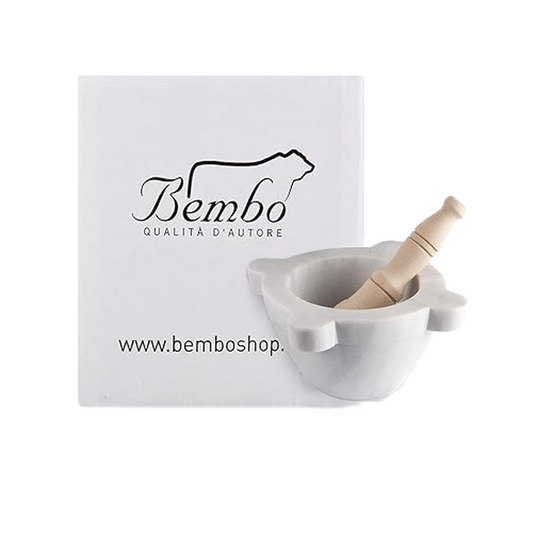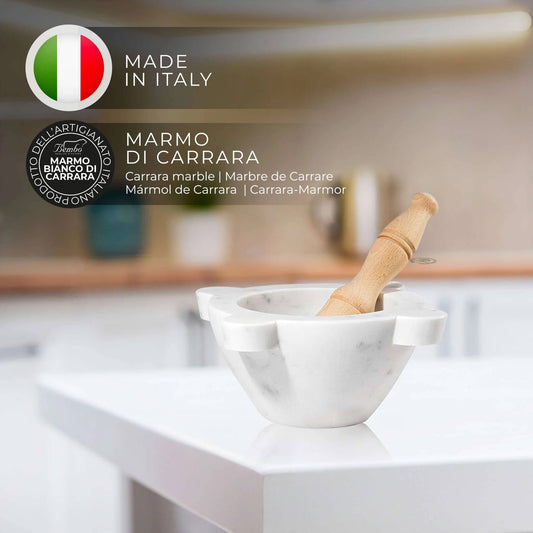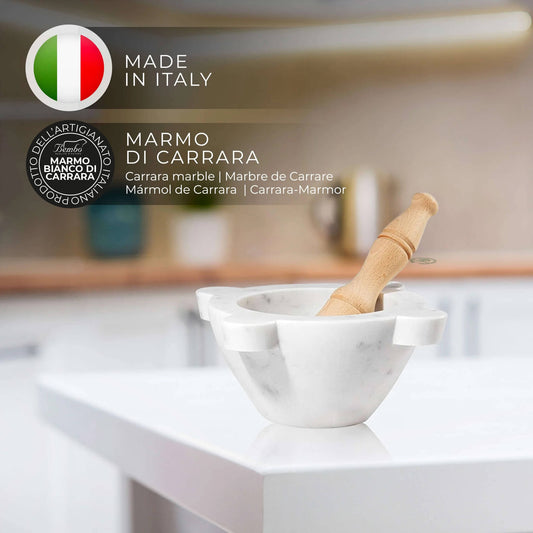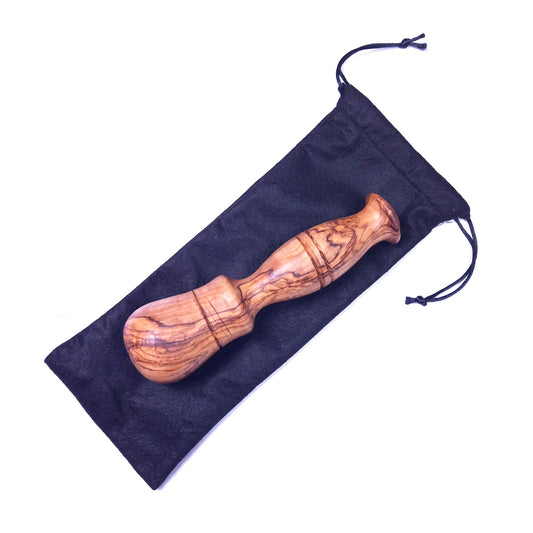The Mortar in White Carrara Marble – The Original
The Carrara marble mortar is the perfect ally for making pesto alla Genovese and other traditional recipes. Crafted from fine Italian marble, each piece is unique, with natural veining that makes it a true design object. Ideal for pounding spices, herbs, garlic, and nuts, it guarantees excellent performance and long life. Perfect for those seeking a durable, elegant, and authentic mortar, it adds a touch of sophistication to the kitchen.
-
White Carrara Marble Mortar - Genoese Model - 20 cm
Regular price €82,50 EURRegular priceUnit price per -
White Carrara Marble Mortar - Genoese Model - 18 cm
Regular price €73,50 EURRegular priceUnit price per -
White Carrara Marble Mortar - Genoese Model - 16 cm
Regular price €62,50 EURRegular priceUnit price per -
White Carrara Marble Mortar - Genoese Model - 14 cm
Regular price €57,90 EURRegular priceUnit price per -
White Carrara Marble Mortar - Genoese Model - 10 cm
Regular price €35,50 EURRegular priceUnit price per -
White Carrara Marble Mortar - Genoese Model - 8 cm
Regular price €31,00 EURRegular priceUnit price per -
Handcrafted Olive Wood Pestle – Natural Elegance 6x6x20 cm
Regular price €36,00 EURRegular priceUnit price per -
Handcrafted Beech Wood Pestle – Functional Elegance in Three Sizes
Regular price From €16,50 EURRegular priceUnit price per
The Mortar in White Carrara Marble
Learn more about the Marble Mortar
At the heart of every home kitchen , there is an ancient and fascinating tool : the marble mortar . This tool, used since ancient times, has transformed over the centuries, never losing its timeless utility . Today, the Carrara marble mortar not only continues to be an indispensable ally for the preparation of sauces and pestos , but also stands as a design object .
The choice of marble as a material is not accidental: marble, thanks to its smooth but resistant surface, allows a fine grinding of the ingredients without absorbing their flavors or odors, thus ensuring the purity of each preparation . Furthermore, the heaviness of the marble mortar facilitates the pounding and grinding action, making the process more effective and less tiring.
From the Mediterranean to Asia, every culture has its own version of the mortar, demonstrating the universality of this tool. In Italy, the Carrara marble pesto mortar is famous for its superior quality, becoming a symbol of excellence in the field of gastronomy. Its history, steeped in traditions and culinary secrets, tells of generations of chefs and cooking enthusiasts who have passed down the art of using the mortar, confirming its essential role in the preparation of dishes rich in history and flavor.
How to make pesto with a mortar: secrets and techniques for a perfect result
The preparation of Genoese pesto with a marble mortar is a culinary art that has its roots in Ligurian tradition , giving this condiment an unparalleled taste and consistency. The use of a mortar, compared to modern electric tools , allows you to crush the ingredients instead of cutting them, preserving their aroma and releasing essential oils that enrich the flavor of the pesto.
First of all, it is essential to choose high quality ingredients such as fresh basil , garlic and Italian pine nuts , Parmigiano Reggiano with a touch of Fiore Sardo pecorino for stronger palates, extra virgin olive oil and coarse salt.
Gently wash the basil leaves in cold water and pat them dry with a clean cloth or kitchen paper, taking care not to break them and to maintain the bright green color .
Start by placing a couple of garlic cloves and a pinch of flaked salt in the mortar. Crush until you obtain a cream. Add the basil leaves little by little, crushing them against the walls of the mortar with rotating movements of the pestle. This process releases the essential oils of the basil, essential for the flavor of the pesto.
After reducing the basil to a cream, add the pine nuts and continue to crush until you obtain a smooth mixture . Add the grated Parmigiano Reggiano (and Pecorino, if desired) to the mixture in the mortar, mixing with the pestle. Gradually pour in the extra virgin olive oil , continuing to mix until the pesto reaches the desired consistency.
How to clean marble mortar
The wooden mortar and pestle are timeless culinary tools that require specific care to maintain their performance and aesthetic beauty over time. The first step in maintaining the mortar and pestle is proper cleaning after each use. Clean with a soft sponge and warm water, avoiding the use of aggressive detergents that can erode the surface. Dry immediately to prevent moisture absorption.
Once cleaned, it is important to store the mortar and pestle properly to avoid exposing them to temperature changes, which could cause cracks or breakages. Also, to preserve the shine , you can treat the surface with a mineral oil specific for stone, applying it with a soft cloth.
















